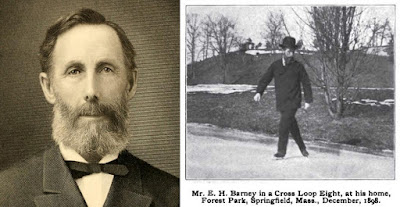 | |
| Deepwood Hall artwork by Arthur A. Hart 1961 Longmeadow, MA Annual Town Report | |
For eight years beginning in 1961 a copy of original artwork by the artist Arthur A. Hart was showcased on the cover of the Longmeadow, MA Annual Town Reports. Prof. Hart was a talented artist and he also was the Chairman of the Art Dept. at Bay Path Junior College in Longmeadow. During that eight year period town residents could view a well recognized scene in Longmeadow on the cover of the Annual Town Report that is published every year. Most of the covers were his depictions of historical houses in town with a description, so everyone could also learn some Longmeadow history.
 |
| Prof. Arthur A. Hart The Portico- 1968 Yearbook Bay Path Junior College Longmeadow, MA |
Prof. Hart, his wife Novella and four daughters Susanna, Robin, Catherine and Allison moved to Longmeadow in 1955. It was at that time that Prof. Hart became a member of the faculty at Bay Path Junior College. The family lived at 39 Edgewood Avenue. In addition to teaching at Bay Path, this artist was interested in nature. Many people enjoyed his nature walks at Fannie Stebbins Memorial Wildlife Refuge in Longmeadow. Also being interested in conservation in Longmeadow Prof. Hart served as chairman of the Conservation Commission. In addition to his responsibilities at Bay Path Junior College he and other water color colleagues formed the Valley Watercolor Society and he served as its president. This gentleman was also very interested in history and gave lectures in our area.
 |
| The Springfield Union Oct. 19, 1960 |
In 1969 Prof. Arthur A. Hart was offered a position as Director of the Idaho State Historical Museum in Boise, Idaho. This new role also included serving as Director of Education for the Idaho State Historical Society. He and his family had lived in Idaho before coming to New England.
Arthur A. Hart lived in Boise, Idaho the remainder of his life. In 2020 this talented gentleman passed away at the age of 99 years. So many years ago he and his family left Longmeadow, MA. However, there are current town residents and also former residents who remember this gentleman and his family. We can continue to admire his works of art that he created for the covers of our Longmeadow Annual Town Reports.
Copies of the other 7 Longmeadow Annual Town Report covers with the artwork of Arthur A. Hart are below:
 |
| 1963 Annual Town Report Cover Photo |
| THE COVER PICTURE on this year's town report is of one of the most elegant of the Georgian architecture practiced in America in the early homes in the Connecticut Valley, built by Alexander Field in 1794. It is a variation late 18th and early 19th centuries. The measurements of its beautiful proportions are on file in the Library of Congress and it has long been the subject of attention by students of American architecture. The present owners are Mr. and Mrs. Jacob Richmond, who have done much to restore this exceptional house to its original style and beauty. The painting is by Arthur A. Hart, Chairman of the Art Department at Bay Path Junior College. |
 |
| 1964 Annual Town Report Cover Photo |
 |
| 1965 Annual Town Report Cover Photo |
 |
| 1966 Annual Town Report Cover Photo |
This familiar trio of Longmeadow Street houses on the East side of the Green, on its Northern end, have not always been neighbors. #655, on the left in the picture, was built before 1758 on the opposite side of the street by Thomas Bliss. It served for many years as a tavern, run by Nathaniel Ely, and was moved to its present location in 1855. The present owner is Dr. Stanley Teale.
Also moved to its present location, after an interesting early history elsewhere is #663, now owned by L. Curtiss Guild. It was for many years a hat factory and was located on the Green Proper until 1831, when moved by Israel Gates.
 |
| 1967 Annual Town Report Cover Photo |
 |
| 1968 Annual Town Report Cover Photo |
Additional Sources: Springfield Daily News- Oct. 17, 1955 and Dec. 12, 1968; The Springfield Union- May 12, 1969.
**With appreciation to LongmeadowMA.org for sharing their collection of many of the Longmeadow Annual Town Report covers that former local Longmeadow, MA artists created. Click here to view the complete collection.
Written by Judy Moran








































